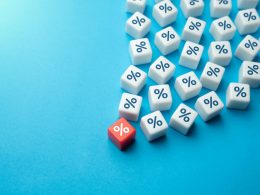Despite any insistence that it’s not, the Fed’s new initiative to buy Treasury bills looks like a Quantitative Easing program.
by Krishna Memani, Vice Chairman of Investments, Invesco
In its efforts to not lose control of the policy rate-setting mechanism and manage the repurchase agreement (repo) rate, the US Federal Reserve (Fed) recently announced a new initiative to buy several hundred billion dollars’ worth of Treasury bills over the next few quarters.
That it would do something to control the financing rates for safe assets wasn’t, in and of itself, that unexpected. After repo rates got to double digits, some initiative to bring them down was inevitable. The fact that the Fed chose this option, of all the options available to it to maintain the “ample reserve” regime, is actually quite important.
The story got even more interesting when various Fed officials, including Chair Jay Powell, went out of their way to explain that this wasn’t your old Quantitative Easing (QE).
This line of argument actually tells you a lot more about what the Fed officials are looking to accomplish and about the policy tensions in the Federal Open Market Committee (FOMC) with regard to these goals.
Before getting into that, let us first establish what this new initiative will do for the markets. In this context, the old adage seems to apply: if it walks like a duck and quacks like a duck, then it is a duck. The Fed officials are actually taking advantage of the fact that there is no established and singular definition of QE in order to resist the idea that what they are doing is Quantitative Easing.
The definition of Quantitative Easing
From a practitioner’s perspective, this issue is not that hard to figure out. If you look at the history of all the QE programs instituted by various central banks, a QE program should accomplish three objectives:
1. It should add a significant amount of reserves with a pronounced debt-monetization component. That is, the central back should be buying back government securities and paying for this initiative by creating new reserves.
2. It should bring down the term premium (the amount by which the yield-to-maturity of a long-term bond exceeds that of a short-term bond). That is, a QE program should lower the rate differential between policy rates and the rates on longer duration, safe assets.
3. It should provide forward guidance that rates are going to remain low for a long time.
In this definition of QE, buying Treasury bills with reserves, which is what the Fed is currently doing, does not meet all of these objectives because this program isn’t explicitly designed to accomplish objectives 2 and 3, in my view. And that is the line Fed officials are espousing to argue that this new initiative is not a QE program. But don’t let that fool you. As a market participant, we don’t care what the Fed calls it. Instead, we care about what the impact is likely to be. In that regard, the net impact of this program will be essentially the same as that of other Fed QE programs.
The reason for this judgement is relatively straightforward. The Fed buying bills with new reserves is creating higher levels of permanent reserves for certain. That is this new program’s stated objective. The Fed is certainly monetizing government debt. So, we can check off that the new initiative meets objective 1.
While buying bills may not reduce the term premium, in the current rate regime, that does not matter much because the term premium is already very low. Also, with the Fed buying safe assets, it is very unlikely that the term premium will go up in a meaningful way anytime soon. Further, if the Treasury Department adjusts its issuance program to feed the beast and not create a dislocation in the front of the market, as I would do if I were them, this objective will be achieved. Safe assets, after all, are quite fungible. So that’s a check for objective 2.
Finally, from a forward guidance standpoint, the Fed is already in an easing regime and has communicated quite effectively that rates are going to remain low, and financial conditions will remain easy for the foreseeable future. Whether that is getting officially communicated to the markets, along with a buying program, is somewhat irrelevant. The net message to the market is essentially the same.
As a result, from my vantage point, and from the perspective of its impact, the bird is walking with a splayed gait and is creating a commotion with its quacking. It has to be a duck.
A positive step for financial markets
A more important and relevant question for the markets, away from the Treasury mavens, is why should they care?
Well, they should. While we may debate the effectiveness of QE to help the real economy grow, the data from previous episodes of such programs demonstrate that a QE program helps asset prices. So, if this is, in fact, QE, which I believe it is given the current shape of the Treasury curve, this effort will push financial asset prices higher over the next few quarters and at the very least arrest the downward spiral of US growth.
The bottom line, then, is that the Fed can call the new bill-buying program whatever it wants; the net effect is that markets will likely go higher.
I believe the reason the Fed does not want to call it a QE program has more to do with the dissension within the Fed. Given that quite a few members of the FOMC did not want to cut rates at the last meeting, Chair Powell would have a hard time carrying the committee along to unleash a new QE program. Further, the fact that the Fed disclosed this program ahead of the October meeting is quite telling. If it cuts rates one more time at this meeting, as I expect it will, they don’t want to be accused of a double dollop of easing in one meeting. That seems to be the case, especially for members who don’t believe the economy needs any more support.
So, enough with the palace intrigue. The bottom line again, in my view, remains that markets are going higher, and the economic outlook for the US is looking up rather than down. In this environment, we suggest that investors consider buying global equities and credit assets.
*****
Important Information
Blog Header Image: US Schools / Getty Images
The opinions expressed are those of the author as of October 16, 2019, are based on current market conditions and are subject to change without notice. These opinions may differ from those of other Invesco investment professionals.
These comments should not be construed as recommendations, but as an illustration of broader themes. Forward-looking statements are not guarantees of future results. They involve risks, uncertainties and assumptions; there can be no assurance that actual results will not differ materially from expectations.
Invesco Distributors, Inc. is the US distributor for Invesco Ltd.’s retail products and collective trust funds, and is an indirect, wholly owned subsidiary of Invesco Ltd.
Copyright © Invesco
















